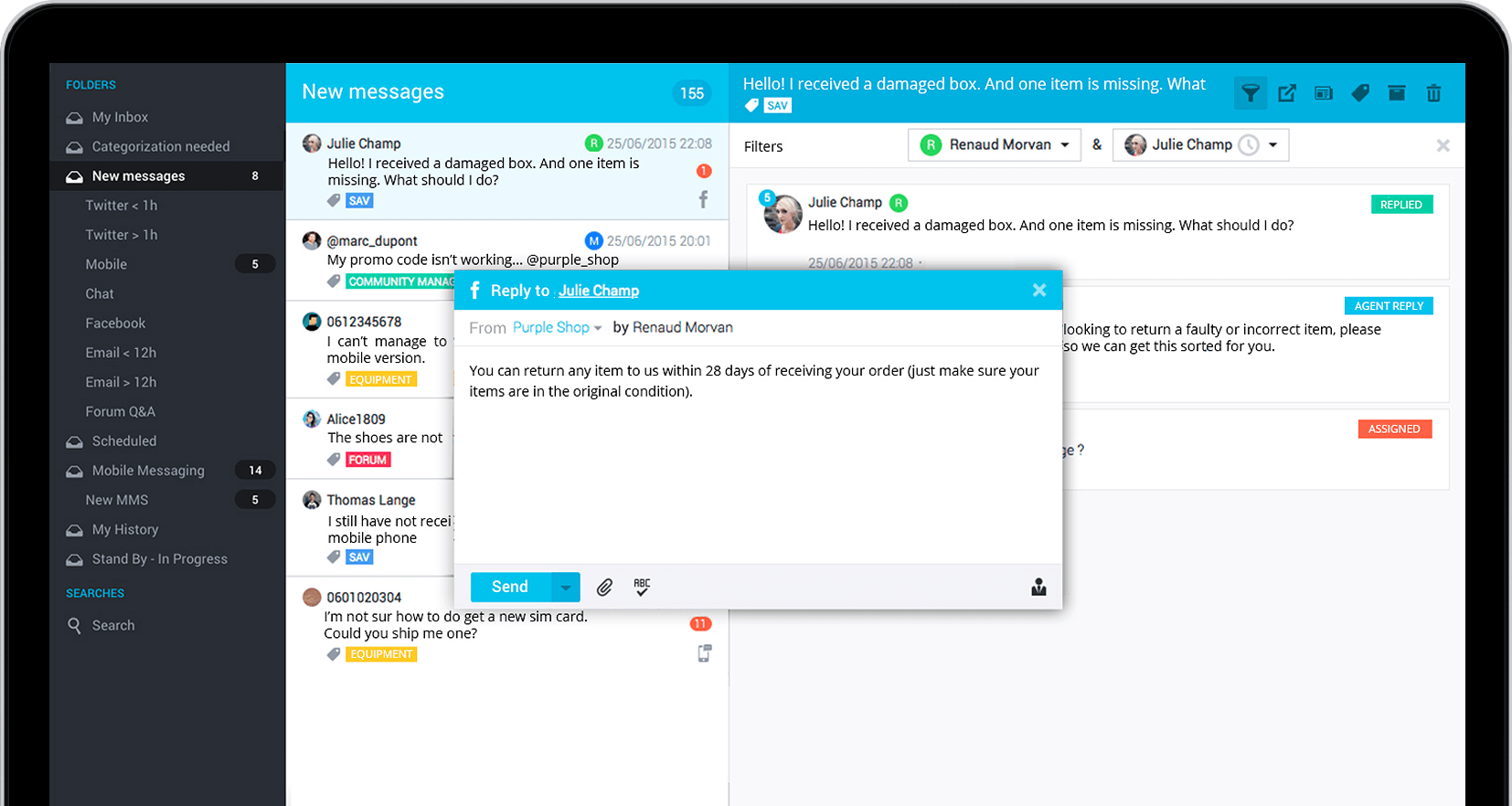The future of work is already here, and it’s hybrid teams. Learning to lead and manage effective hybrid teams is crucial in businesses of all sizes, across all industries. The world is never going back to 100% in-office, it seems, so the ability to navigate this new normal is a great tool to add to your leadership arsenal.
Hybrid teams can be highly effective, as recent history demonstrates. However, that doesn’t mean they just naturally are! To streamline your hybrid work processes and improve productivity with your hybrid team, you need to put in the work.
There are a lot of ways to keep your hybrid team on track. Let’s look at nine ways you can make an impact.
Today we’ll cover:
- What is a hybrid team?
- What an effective hybrid team looks like
- What a dysfunctional hybrid team looks like
- 9 ways to lead effective hybrid teams
📊 How are businesses navigating hybrid work today? Get all the facts & figures in our free State of Hybrid Work report.
What is a hybrid team?
Simply put, a hybrid team is a workforce that splits time between a brick-and-mortar office and working remotely.
There are lots of different hybrid work models out there to choose from. Some businesses have all employees split time between the office and remote work. Others allow their teams to decide if they want to be full-time remote or in-office. While there’s no wrong way to do hybrid work, there are some ways to help your team stay connected and get more done.
Now that we know what a hybrid team is, let’s get a more practical look at how a hybrid team operates. We’ll compare two businesses—Company A and Company B—in their journeys with hybrid teams.
What an effective hybrid team looks like: Company A
First, the good: let’s look at Company A, a business that has hybrid work down to a science.
Team members are in near-constant communication
When Company A moved to a hybrid work model, leadership invested upfront in collaboration software to keep everyone in touch. At any given moment, employees are sharing files via their team messaging app, calling each other via cloud phone for a quick chat, or hopping on video conferences to give presentations.
In fact, Company A really thought about how frustrating it is to switch between apps all day. So when they went hybrid, they got cloud communications software that handles messaging, video, and phone calls all in one app:

Everyone knows their role and what’s expected of them
No matter where team members spend their day, the expectations for their work day are clear. They know when they need to be online and available, when their breaks are, and when it’s time to sign off for the day. Their boss has set clear goals for their work and follows up with them regularly to make sure there are no roadblocks.
Remote employees feel like part of the team
Company A works hard to ensure their remote team members feel included and like part of the company. And this doesn’t just mean they remember to invite them to meetings! Remote team members are given equal opportunities to lead projects and presentations and are also considered for future leadership roles, just like their in-office coworkers.
Happy hybrid teams means happier customers
Company A has given their team members the right tools and the flexibility to get the job done, wherever they work. Because of this invested trust, team members feel happy and supported, no matter if they work in the office or at home. This increase in employee happiness has led to a higher quality of work, happier customers, and increased employee retention.
What a dysfunctional hybrid team looks like: Company B
Now let’s take a trip to Company B, where hybrid work is a little… less than rosy.
Communication issues slow down work
Since going hybrid, Company B has been making do with their existing communications infrastructure instead of upgrading. Their team messaging app was built for in-office chats and isn’t equipped with file sharing, task tracking, or the option to hop on a video call in case things get confusing.
Important conversations and documents are lost in mile-long email threads, which has caused projects to lose steam.
An unclear hybrid work schedule confuses everyone
Company B hasn’t put much thought into how to structure their hybrid teaming, and it shows. No one knows who’s going to be in the office and on which days. This wouldn’t be a big problem, if their clunky communications software didn’t make the team favor in-person conversations.
Lack of trust leads to micromanaging remote employees
Company B feels like they were forced into hybrid work, and leadership has dragged its feet on seeing the benefits. In fact, they don’t think remote team members can be trusted to work as well as in-office employees.
Managers waste a lot of time “keeping tabs” on remote team members and creating arbitrary rules about when and how folks can work from home. This has created a lot of frustration and resentment between employees and management… as well as between in-office and remote employees.
Proximity bias makes remote employees feel left out
Because the whole office can feel a lack of faith in hybrid work from the top down, no one at Company B works very hard to include the remote employees. They’re left out of important meetings and informal chats alike. Management also overlooks them for stretch projects and promotions, due to an unconscious bias against remote workers.
🎧 How do you know if you’re buying the right conference call headset? Download this step-by-step buyer’s checklist to find out.
9 ways to lead effective hybrid teams
Is your hybrid team situation more like Company A, or Company B? You can tell us, we won’t judge.
Now that we know what good (and bad) hybrid teams look like and how they operate, let’s dig in on how to make your own hybrid teams run more like Company A.
1. Communication is key
When you’re managing a hybrid team, it’s important that everyone is on the same page. Establish regular check-ins, whether it’s through video conferencing, phone calls, or email updates. This will ensure that everyone is aware of what’s going on and that tasks are being completed efficiently.
Like Company A, it’s important to invest in powerful communications software that’s easy for your team to adopt. For instance, RingCentral MVP’s app has a super-intuitive look and feel, and it rolls all of your most important communication needs into one:
- Business phone
- Team messaging
- Video conferencing/team huddle
- File sharing
- Team calendars
You can even flip your video and phone calls between devices with one click, so you don’t have to drop and rejoin:

It’s also important to evaluate your communication. Talk to each other about what’s working and what’s not. That way, you can adjust your methods as needed.
2. Set expectations, roles, and responsibilities
With any team, it’s important to set clear expectations and clearly define roles and responsibilities from the start. This is especially true for hybrid teams because there are a lot of moving parts and you want to avoid any confusion or miscommunication.
Outline each team member’s role, what they’re responsible for, and how they should go about completing their tasks. This will help to ensure that everyone is on the same page and that tasks are completed efficiently.
RingCentral makes it easy to define these roles by enabling efficient communication between team members and allowing you to set access permissions based on individual team members’ needs and job responsibilities.
3. Use the right tools
There are a lot of great tools out there that can help you manage your hybrid team effectively. Choose tools that will make communication and collaboration easy, so your team enjoys using them every day.
Consider using a single vendor for your cloud-based communications, too. That way, you’ll get a more seamless experience, easier billing, and avoid any compatibility issues. Going all-in-one can also save you money over piecing together multiple solutions.
RingCentral’s contact center solution is another great tool for leading hybrid teams effectively. It gives you the ability to route calls to the right team member, regardless of their physical location, and includes features like call recording, and agent performance reports. It’s also an omnichannel service solution, so you can handle phone calls, business texts, and even social media requests from customers:

4. Foster a culture of trust and respect
When you’re managing a hybrid team, it’s important to create a team culture of trust and respect. This means being open and honest with each other, valuing each other’s input, and respecting each other’s time and space.
It can be helpful to establish ground rules for how you’ll interact with each other from the start. This will help to ensure that everyone is on the same page and that there’s a mutual understanding of what’s expected.
One of the hardest things to do when managing a hybrid team is trusting that your employees are doing what they’re supposed to be doing when you can’t see them. However, it’s a critical component of effective management. If you don’t trust your team, it will be difficult to build a successful and cohesive hybrid team.
5. Encourage intentional collaboration
With a hybrid team, it’s important to encourage collaboration. This can be done in a number of ways, such as using project management tools, setting up regular check-ins, or using video conferencing for collaborative sessions.
RingCentral makes it easy to encourage collaboration with mentions, video chats, and other tools to keep your team connected.
One of the most effective ways to encourage collaboration is to be intentional about getting to know each other on a personal level. Spend time getting to know your team members and their work styles. This will help you understand how best to utilize their skills and what kind of communication methods will work best for them.

6. Be flexible and adaptable
With a hybrid team, there’s no one-size-fits-all approach; you have to be flexible. What works for one team might not work for another. Not everyone will have the same working hours or work the same days. And that’s okay! The most important thing is that you’re able to adapt to accommodate flexible work and the needs of your remote team.
With a solution like RingCentral MVP, you can easily adjust your settings to accommodate the needs of your team. For example, you can set up different communications channels for different time zones or enable after-hours messaging so that employees in different time zones can still stay connected.
7. Find a realistic balance between work and life
When you’re managing a hybrid team, it’s important to have realistic expectations. This means understanding that not everyone will be available at the same time and that some tasks may take longer to complete than others.
It’s also important to remember that there’s more to life than work. Encourage your team to find a work-life balance. This will help them to be happier and more productive in the long run.
8. Take advantage of technology
When you’re managing a hybrid team, technology can be your best friend. There’s a lot of collaboration software that can help you to stay connected and manage your team more effectively.
RingCentral MVP is a great solution for managing hybrid teams. It gives you the ability to route calls to the right team member, regardless of their location. Your employees can sync their mobile app with their desktop app so they can work on the move.
They can even text and make calls from their computer or use their mobile phone with their work number. This makes it easy for you to stay connected with your team, no matter where they are.
9. Encourage and support continuous learning
When managing a hybrid team, fostering a culture of continuous learning is essential. This means providing your team members with opportunities to develop new skills and advance in their roles.
Here are some ways to achieve this:
- Develop Personalized Learning Plans: Create a learning plan for each employee that incorporates both formal and informal training methods. This can include online courses you create or curate, webinars, conferences, or even in-house lunch-and-learns.
- Embrace Online Learning: Creating online courses allows you to deliver valuable training to your team anytime, anywhere. This is particularly beneficial for a hybrid workforce with flexible schedules.
By investing in your team’s development, you’ll not only empower them to excel in their roles but also cultivate a stronger and more collaborative team environment.
Effective hybrid teams start with the right technology
Managing a hybrid team can be challenging, but it’s not impossible. By following these tips, you can set your team up for success. And with the right tools in place, such as RingCentral MVP, you can make managing a hybrid team easier than ever. See our small business solutions to learn more!
Originally published May 18, 2022, updated Jun 19, 2024





